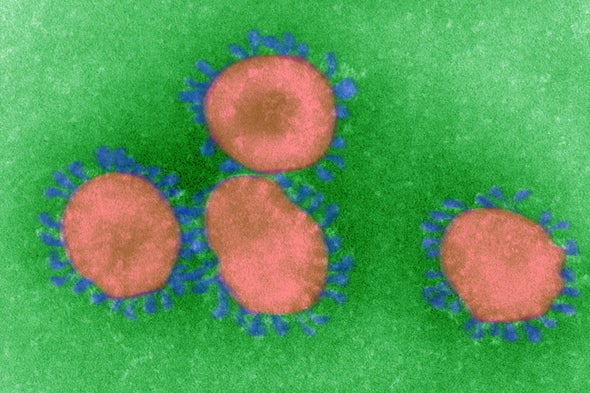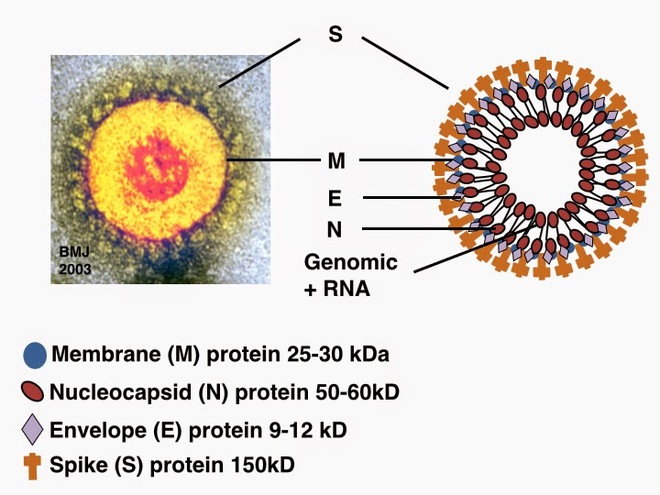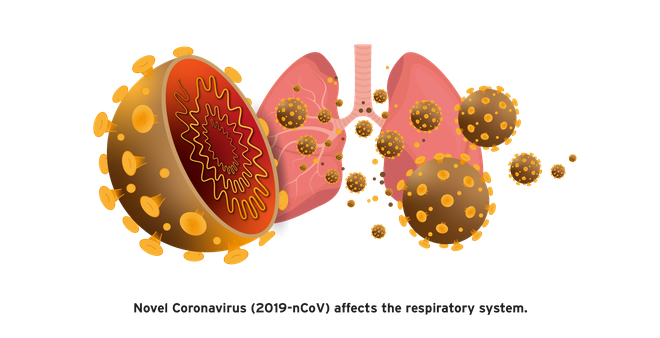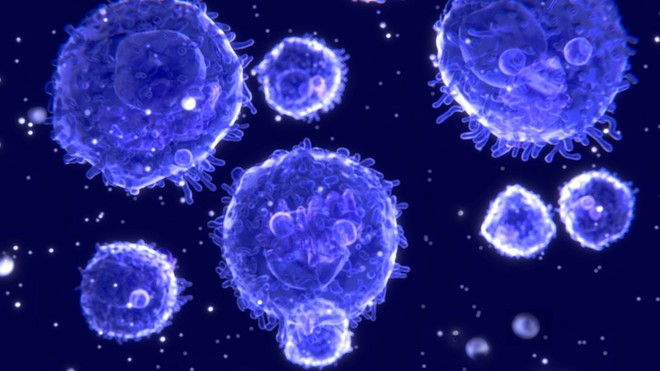Looking for solutions to corona virus toxicity: When do they cause death, when only cause flu?
- Tram Ho
The SARS-CoV-2 virus is causing an outbreak of Covid-19 acute respiratory infection in more than 100 countries and territories around the world. It has now infected more than 112,000 people and killed 3,988 of them.
But before the World Health Organization (WHO) declared a global emergency of PHEIC for this disease, most people probably did not know the term ” corona virus” or “coronavirus” .
In fact, in addition to SARS, MERS and now SARS-CoV-2, the corona virus family has four anonymous strains denoted as 229E, NL63, OC43 and HKU1. These are the 4 strains of corona causing 1/5 of the common flu cases worldwide.
* If you want to know more about the new corona virus disease situation in the world, please check here .

Looking for solutions to corona virus toxicity: When do they kill, when do they catch a flu?
But why, the same corona family that some virus strains such as SARS, MERS are highly toxic, with mortality rates of 10% and 40%, respectively, when infected? In contrast, SARS-CoV-2 – although highly infectious, only killed 3% of the patients? The viruses 229E, NL63, OC43 and HKU1 are not even known.
Anatomy of the structure of a corona virus
The corona virus is a enveloped virus, with single-stranded RNA. What this means is that its genome is just an RNA sequence (not DNA) and each viral particle is encapsulated in a protein envelope.
Basically, all viruses have one thing in common: They invade the first cell, capture the process that controls cellular DNA, and take advantage of its resources to multiply. The cell must then be reluctant to make countless copies of the virus, and when the numbers are large enough, the virus copies break down the original cell, exit and start an infection cycle again. multipliers for other cells.
A special thing in the process of copying viruses, is that after each such replication, they have the ability to generate new mutations. The corona virus has the longest genome among the other single-stranded RNA viruses. With about 30,000 genetic characters, mutations can occur at any one of them.
The longer a virus has a genome and replicates over time, the more likely it is that mutations will arise. As a result, these viruses evolved very quickly. Usually, most virus mutations are not harmful, but a few can cause increased virulence, such as allowing the virus to infect new types of cells, or even new species.
Going back to the corona virus, its structure consists of 4 partial proteins: the nucleus (N), the sheath (E), the membrane (M) and the spines (S). The artificial sheath forms a genetic core. It is again encased in proteins that make up the virus’s shell and membrane.
The proteins grow suddenly outside the membrane, forming spines all around the surface of the virus, giving it a sun-like appearance and emitting halos under an electron microscope.
It was this feature that was used to name them, corona virus, which means luminescent virus. And it is these same protrusions that bind to receptors on the host cell. Once it is realized that the target receptors of the cell it can and want to infect, the virus will invade inside.

The structure of corona virus consists of 4 parts: the nucleus (N), the sheath (E), the membrane (M) and the spines (S).
In the corona group, the viruses mainly infect animals. But there are 7 confirmed strains of corona virus. These include the SARS virus that causes severe acute respiratory syndrome, the MERS virus causing the Middle East Respiratory Syndrome, and the new corona virus (SARS-CoV-2) that causes serious lung disease.
In addition, 4 strains of corona virus infect others but cause only mild symptoms such as the common cold, denoted as 229E, NL63, OC43 and HKU1.
The main difference between severe and mildly infected coronavirus strains is that severe coronary viruses develop not only in the upper respiratory tract (nose and throat), but they also thrive down the airways. lower respiratory tract (lungs).
The SARS virus is capable of binding to a receptor called ACE2 and MERS binds to a receptor called DPP4, both of which are found in lung cells.
In addition, these receptors appear in a number of other organs, and the distribution of these receptors explain the course and symptoms of each disease. For example, MERS is more fatal than SARS and it has more prominent gastrointestinal symptoms.

The new strain of corona virus 2019-nCoV causes disease in the lungs because of its ability to bind to the ACE2 receptor in lung cells.
MERS is not a strong infectious disease either, and it may also be a receptor-related trait.
Virology researcher Christine Tait-Burkard from the University of Edinburgh said: “The DP4 receptor is expressed [high] in the lower bronchus [airway into the lungs], so you need to have a large number of viruses. MERS can infect new disease.
The reason is that our airways filter pathogens quite effectively. You need long and strong contact [so that the virus reaches the lungs], which is why we see people who work closely with camels who are most susceptible to MERS. “
Conversely, viruses that invade and infect the upper respiratory tract will be able to invade and exit there more easily. These are viruses that can spread faster. In addition, the temperature range is also a factor in making the difference between viruses, because our upper airways are usually cooler in the lungs, Tait-Burkard said.
If the virus has grown more stable at that low temperature range, then it does not enter the lower respiratory tract anymore. The deeper we go into the viral respiratory tract, the more severe the environment for their development.
Analysis of the 2019-nCoV virus strain showed that it uses an ACE2 receptor, similar to SARS, to invade cells. This observation is consistent with the fact that it is much less toxic than MERS. Mortality caused by the new corona virus is only about 2%, lower than the death rate of MERS up to 40%, although the number may change as many new corona infections are still being detected.
However, receptors themselves are not the only determinants of virulence and disease caused by viruses. For example, another strain of corona virus, designated NL63, binds to the same receptor as SARS, but it only causes an upper respiratory infection, while SARS primarily infects the lower respiratory tract.
” Why not, we don’t know, ” said Stanley Perlman, a microbiologist from the University of Iowa. Another puzzling thing is that the ACE2 receptor is common both in heart cells, but SARS is not contagious there. ” It is a clear indication that there are other receptors, or co-receptors, which are also involved ” in the transmission process, said molecular biologist Burtram Fielding at Western Cape University in South Africa. infection and pathogenicity of corona virus.
Virus binding to a receptor as we know it is only the first step in the process of invading their cells. Once the virus is attached to the host cell, they begin to mutate together and other viral proteins can bind to other receptors of the host cell.
The onslaught of the immune system
We know that, when a foreign entity enters the body (whether it is a virus, bacteria, fungus, other pathogen or even an organ transplant), it activates the immune system to attack. intrusion entity again.
The mobilization of the immune system begins when a cell detects an invader and releases proteins called interferons. Interferon can block foreign entities in many ways, in the case of viruses, it inhibits their replication and multiplication. Interferon bacteria and foreign cells can cause cell death.

The immune system will detect and remove any foreign particles that invade the body, including viruses.
Unfortunately, the general attack of the immune system sometimes occurs excessively and harms the host. “There are many diseases that are caused by the body’s own inflammatory response, in parallel with vandals like viruses, ” Professor Weiss said.
“That will also determine how virulent the virus itself is: how many immune responses it causes, as opposed to a degree of protection?”
This aspect is also the reason why underlying medical conditions, or background illnesses, are so important. Most people who have died of the new corona virus so far have had pre-existing chronic conditions, such as autoimmune diseases, or secondary infections. These underlying diseases are much more complicated when the body is again dealing with a new strain of the virus, according to Tait-Burkard.
” That is why it is important to note that when treating these patients, they must treat their comorbid illness and take antibiotics to prevent secondary infection, ” he said.
But, while the immune system can detect and expel invaders, the virus also has its strategies to cope. The corona viruses carry a number of extra proteins, essentially developing to help it hide under the radar of the immune system.
And each corona strain seems to have different camouflage strategies.

Sometimes the overreaction of the immune system is also detrimental to the host, making them sick.
” Although these viruses are closely related, their accessory proteins are different, ” says Professor Weiss. He thinks the virus has evolved to possess extra proteins that are capable of neutralizing many parts of our immune system.
Some researchers believe that the corona virus strains are mainly localized in bats, because the bat’s immune system is not “as hot-tempered ” as in humans. Bats do not produce excessive immune reactions that make them safe and disease-free even when carrying corona virus, Tait-Burkard said.
Instead of producing extreme immune responses to corona viruses, bats maintain them at a constantly low level, which could contribute to the evolution of the virus.
” Bats show interferon consistently and consistently, ” Tait-Burkard said. This gave the viruses an exercise environment, adapting to the immune response. From there the virus learns the ability to hide. Bats contain many viruses that can infect humans silently without being detected.
However, the extra proteins that the virus has developed during bat life are not well understood. ” You can eliminate these proteins without affecting their ability to grow ,” Perlman said.
” You might think: if you have a protein that is the key to fighting the immune response, then when you take it out of the virus, the immune response will have to be won, but the truth doesn’t necessarily happen. out in that direction “.
Some researchers believe that extra proteins affect the lethal level of corona virus. There have been studies with SARS, in which removing an extra protein did not change the viral replication effect, but it made the virus less toxic and less pathogenic.
* Refer to the information of Doctor Tran Van Phuc to understand correctly about the corona virus family without panic.
Tait-Burkard says that the corona virus has some ability to correct genetic errors by itself, but it does bypass certain areas of its genome. Therefore, there are two genomic regions of the virus that allow mutations to occur at high frequency: those that encode proteins that protrude outside the shell and its accessory proteins.
” In those two genomic regions, the corona virus allows a lot of errors to occur during replication. This [is unfortunate for us, and lucky for the virus because it] spurred evolution.” of them.
The corona virus is therefore very easy to bind to new receptors to infect new cells. It is also easy to grow to escape the immune systems of different species, “said Tait-Burkard.” Therefore, corona virus is very easy to jump from species to species, including humans. “
Reference Scientificamerican
Source : Genk
